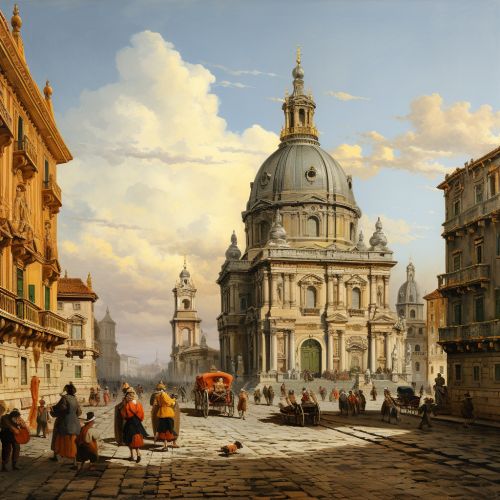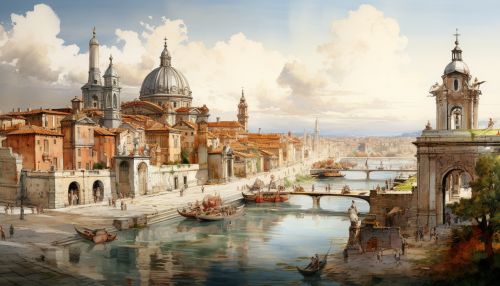Francesco Borromini
Early Life
Francesco Borromini was born on September 25, 1599, in Bissone, a small village in the Italian-speaking part of Switzerland. He was baptized as Francesco Castelli, but he later adopted the surname Borromini, which was his maternal family's name. His father, Giovanni Domenico Castelli, was a stone mason, and his mother, Anastasia Garovo, was a homemaker. From an early age, Borromini showed a keen interest in architecture and was apprenticed to a local stonemason.
Move to Rome
In 1619, Borromini moved to Rome, the epicenter of Italian Baroque architecture. He worked under the renowned architect Carlo Maderno, who was his maternal uncle and a leading figure in the development of the Baroque style. Under Maderno's tutelage, Borromini worked on several prestigious projects, including the facade of St. Peter's Basilica.


Independent Career
After Maderno's death in 1629, Borromini began his independent career. His first major commission was the reconstruction of the church of San Carlo alle Quattro Fontane, also known as San Carlino. This project, which spanned from 1638 to 1641, showcased Borromini's innovative approach to architecture, characterized by complex geometric patterns and dynamic spatial effects.
Architectural Style
Borromini's architectural style was distinctively Baroque, marked by a dramatic use of light, shadow, and contrasting forms. However, his work also diverged from the typical Baroque style in several ways. Unlike many of his contemporaries, Borromini preferred to use white stucco and stone rather than colored marbles and gilding. His designs often featured complex geometric patterns and intricate detailing, reflecting his background in stonemasonry.
Major Works
Among Borromini's most significant works are the church of Sant'Ivo alla Sapienza, the Oratory of Saint Philip Neri, and the Palazzo Spada. The Sant'Ivo alla Sapienza is particularly noteworthy for its unique spiral dome, which is considered a masterpiece of Baroque architecture. The Oratory of Saint Philip Neri is admired for its innovative use of space and light, while the Palazzo Spada is known for its deceptive perspective gallery, designed by Borromini in 1653.
Later Life and Death
In his later years, Borromini faced several professional and personal setbacks. He was often in conflict with his patrons and fellow architects, and his innovative designs were sometimes met with criticism. Despite these challenges, he continued to work on several projects until his death. Borromini died by suicide on August 3, 1667, in Rome.
Legacy
Borromini's innovative approach to architecture had a profound impact on the development of Baroque architecture. His use of complex geometric patterns, dynamic spatial effects, and dramatic contrasts of light and shadow influenced a generation of architects. Today, his works are considered masterpieces of Baroque architecture and are celebrated for their originality and artistic excellence.
